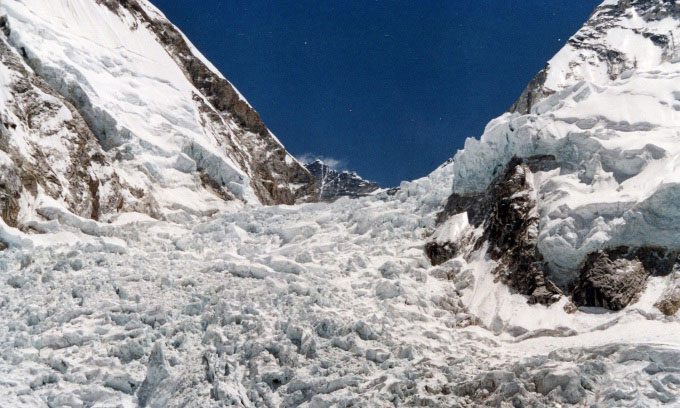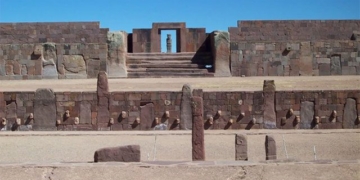The global warming situation is causing the ice on the Khumbu Glacier, one of the most perilous sections when climbing Mount Everest, to become increasingly unstable.
Conquering Mount Everest is inherently a dangerous endeavor. Before climbers on the South Col route can reach Camp 1, they must confront one of the deadliest stretches: the Khumbu Glacier, a slow-moving glacier that spans 2.6 kilometers just above Base Camp.

Khumbu Glacier at Everest. (Photo: Wikimedia/Uwe Gille).
The glacier, similar to a waterfall, is where the ice flows down a cliff. The upper ice breaks into large blocks known as seracs, while the lower ice cracks, forming deep crevasses. Everything at Khumbu is colossal; therefore, seracs can reach heights of 30 meters, and crevasses can be 30 meters wide.
This glacier is so dangerous that there is a team of experts responsible for mapping the safest route through it, known as the Icefall Doctors. This year, they delayed the Everest climbing season by 12 days due to unsafe conditions, as reported by Business Insider on May 5. The Khumbu Glacier is expected to become even more hazardous as global temperatures rise, according to Paul Mayewski, a climatologist and Everest researcher from the University of Maine.
Essentially, the Khumbu Glacier is a slow-moving river of ice gradually cascading down the cliff. The glacier’s movement is what makes it unstable, creating deep crevasses and deadly avalanches. Between 1953 and 2019, 45 people lost their lives on the Khumbu Glacier. The three main causes of death were avalanches on the glacier (49%), ice collapses (33%), and falls into crevasses (13%), according to Alan Arnette, a climbing coach and Everest summiter.

Deep crevasses and avalanches make the Khumbu Glacier one of the most dangerous sections when climbing Mount Everest. (Photo: Olaf Rieck/Wikimedia Commons)
At the beginning of each climbing season, the Icefall Doctors are the first to traverse this treacherous glacier. They identify the safest path, setting up ropes and ladders along the way to assist climbers in navigating the cliffs and crevasses.
This year, the Icefall Doctors have continually encountered hazards that slow their mission. The low snowfall during winter and high temperatures have caused the ice towers and bridges to become unstable, forcing them to reassess the route multiple times. “When you go up there at one time of the day and come down the next day, everything can look very different,” Mayewski stated.
Rapid melting is causing glaciers, such as the Khumbu Glacier, to shrink and erode. This results in more lakes and streams but also increases the risk of avalanches, ice falls, and dangerous crevasses.
“It is likely that the situation will worsen as the climate warms because the ice becomes more mobile. The warmer it gets, the more water flows. That flowing water will undoubtedly destabilize the ice,” Mayewski remarked.
Mayewski’s research indicates that conditions are changing across the entire Mount Everest region, not just at the Khumbu Glacier. One-third of the ice at South Col, the highest glacier on Everest, has disappeared in the past two to three decades. “Even just walking around Base Camp, there are so many areas melting,” he noted.
However, Mayewski does not believe that the increased risks due to climate change will make climbing Mount Everest impossible someday. “Can people still climb the mountain? Yes, I think they still will. Is it more dangerous? Yes – it has always been very dangerous,” he stated.




















































